LIFE IS A COMPOSITE
Hello everyone! For this guest blog post (thank you Scott and Brad for the wonderful invite to contribute!), folks are probably hoping to eek out some super slick tips and tricks about compositing, both for shooting and editing alike (and I’ll definitely deliver on those—I promise!).
But I also wanted to get a bit more philosophical about the nature of compositing and its greater possibilities and implications in my own life’s grand composite—and perhaps yours as well.
For those that could care less about the musings and meandering background of a super Photoshop wizard/nerd and just want the goods, feel free to jump down to the header “Five Tips for Shooting and Editing Composite Images” (you’re welcome :-)!
For everyone else feeling either a bit more curious, pensive, or similarly introspective, please read on!
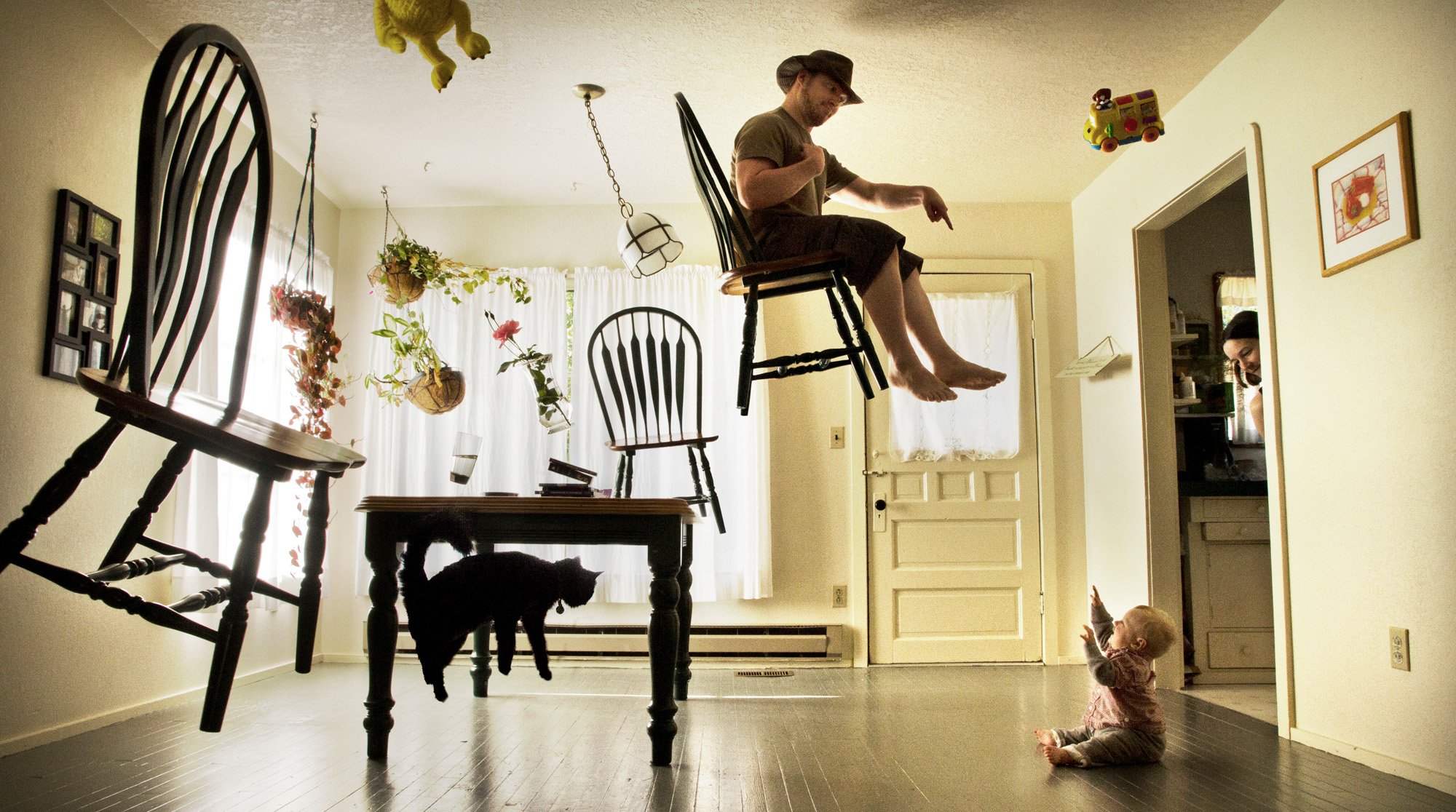
Like creating any new image, I like to start at the beginning with sketches of the process and figure out some kind of endgame. So here we go with a medley of biography, discovery, and realization—but first, an overview!
Filtering and searching way way back, some of my earliest memories are of making art with computers—and after teaching Photoshop for over a decade at the university and college level (yes, big time-leap there!), and writing two books on compositing in Photoshop, I realize the lens through which I perceive the world and life in general has been forever altered. It’s helped me shape my own creative direction. As my (nearly) six year old son now describes his dreams to me in terms of Photoshop tools and features (and accurately I might add!), I see that my focus has even spilled (just a bit) onto my family as well (sorry, family!).
I also realize that I’ve always been a compositor in life—or at least a collector, editor, and creator in some form for nearly my entire 33 years of being. I also believe that we all are compositors to some extent, whether or not we realize it; after all, life is essentially one mega composite we piece together one experience, moment, scar, and laugh at a time… I know, deeeep, right?
But seriously, there is a lot to be said about having a creative career concept, a goal, and using the pieces you have at hand (some garbage and some pure gold)—and seeking out or creating the ones for the concept we’re after. Yes, this is one big “compositing is a box-of-chocolates” life metaphor/story (please excuse the metaphor merge here). So for those interested in going a bit deeper into these layers, here’s a bit of my own composited story… And no, it does not start with a floating feather picked up by Tom Hanks—but that was a pretty damn good composited intro for its time!
A Little Personal History Panel
Scrolling way back again into my own childhood, I was doomed to be an artist from the onset. Starting with lining beans up into a perfectly (obsessively) straight line on some craft paper, my mother had me pegged at only a year or so of age. I believe her gardening journal for that day read something prophetic such as, “he’s definitely doomed to be an artist.” Okay, she probably did not use the word “doomed” but the realization was definitely meta tagged in there.
And while my mom was hobbit level earthy, my dad was equally Tron level nerdy as he ran his own “cutting-edge” computer business in the 80s. Dual custody between the two was like going back and forth from PC to Mac every week—blast you Ctrl vs Cmd!
However, when living with my dad on his week with me, I had access to gadgets such as those early scanners (the kind you had to hand roll over your images with) and the very first digital art applications. I discovered that when bored enough, there was definitely quite a bit you could do with nothing more than a pencil tool and paint bucket.
I was constantly inspired with the fantasy garden dreamland of my mom’s place and was jacked into the Grid at my dad’s. This all happened with a backdrop of living near Yosemite as my non-virtual backyard. This combination made for some interesting early digital art to say the least! Hidden metaphor tip in this—pick out an interesting background if you can.

Learn From Failure And Success
Unfortunately though, my first memory of inspirational and creative failure hit deep (definitely a destructive edit). Apparently the local county fair art competition judges did not understand digital art of any kind (there was definitely no category for it in the early 90s). I suppose I can dismiss my “honorable mention” non-award award, in that I was perhaps a bit too ahead of my time as the crayon drawn house with a crappy looking rainbow took first place that year. Solid play on that kid’s part though—and it’s a good thing I’m still not bitter about it… because that would be one strange snapshot of childhood to travel around with waiting to use as a background to motivation.
Speaking of which, these are all literal (mental) pictures in my life I that have inserted into a number of life compositions and choices. Some imagery we just have with us, and it shapes what we can do with it, who we are, and where we’re going with the pieces. My mental archive to this day is my most cherished inspirational material. Sometimes for texture, narrative, concept, or adding some atmosphere—or revenge! Check out my composite from ten or so years ago (notice the house with a rainbow? Take that, first place-winner kid from childhood!).

Each Composite Has Its Strengths, Difficulties and Elements of Contrast
Scroll down/forward a bit to an awesome artsy Waldorf school education and my dad tragically passing away when I was nine years old (yeah, that one sucked). Regardless of what the life experience is, both joy and drama can definitely add dimension to the composite—and this too had a hand in heavily shaping the direction of my ongoing layering and the direction I have since taken the composition.
From then on, it was entirely up to my mom to see my interests in digital arts continued and supported—and for that she essentially made sure we had a computer loaded with art programs (thank you, mom!) including an early version of Adobe Photoshop (version 2), and the rest was up to me.
An interesting counterpoint complication to this form of creativity was the influences of my school. A large part of the Waldorf School philosophy was/is to heavily discourage computer and screen-time use for children (even back then) of any kind, so I was always a bit of a closeted digital art nerd.
This snapshot of minor intrigue and juxtaposition came in handy though, at least creatively—I was a well supported digital rebel. And contrast is always a nice touch for just about any final image. So is community and family support for that matter.
To Create Is To Play
By the time I was released into the public high school along with my friends, we all had computers (finally!), and we were soon killing each other on networked computer games of extreme violence and gore. But even then, I was somehow the ultimate class creative nerd, even in gaming—and would use my super art/design magic to create beautifully elaborate and intricate game levels to then brutally trap and murder my friends within (what are besties for after all?).
This was another technical direction to the development of my creativity—and my friends definitely paid the price with their avatar lives. I learned that like legos, building your vision is incredibly fun and rewarding. Imagination could be made tangible—and even playable. This is how I think of digital creative tools to this day. Only with less gore.
Experiment And Push Your Creativity To The Edge
Throughout high school though, I never took an actual art class until darkroom photography (which blew my mind and forever changed my life—more on this soon) my final term of senior year. Even without any traditional art classes for four years of high school, I was misguidedly voted on by my peers as “Most Artistic” student of our class (which I bet confused the hell out of those art teachers I never met).
However, it was the photography class that truly had the most impact as I found a catalyst for my creative medium. Even back then, I began compositing, Jerry Uelsmann style, in the darkroom, combining everything I shot.
At 18 years old I took a trip to Europe with some close friends, and started scanning and compositing the resulting images in Photoshop before I really knew what compositing was. Experimenting a bit and pushing yourself creatively is an important goal for any big project.
As mentioned, taking that photography course opened my eyes to the pure magic of a new kind of image creation. It also most definitely made me wonder why I took band as an elective for all those years instead of photography (what was I thinking?!)… But then again I may never have met my wife as she was first chair clarinetist, so there is that.
In any case, I went on to UC Santa Cruz for a degree in Film and Digital Media, then immediately on to graduate school at Syracuse University for an MFA degree in Computer Art. This is where I took my self-taught Photoshop skills to another level and started winning awards and various features—and my first master class tutorial in Advanced Photoshop magazine.
That, unfortunately, gave me the first inkling that I could indeed write a book on the subject. This was also a great lesson that just because you could do something, does not mean you should—but that’s another story entirely! (Sorry for writing the book, family! And the second one too).
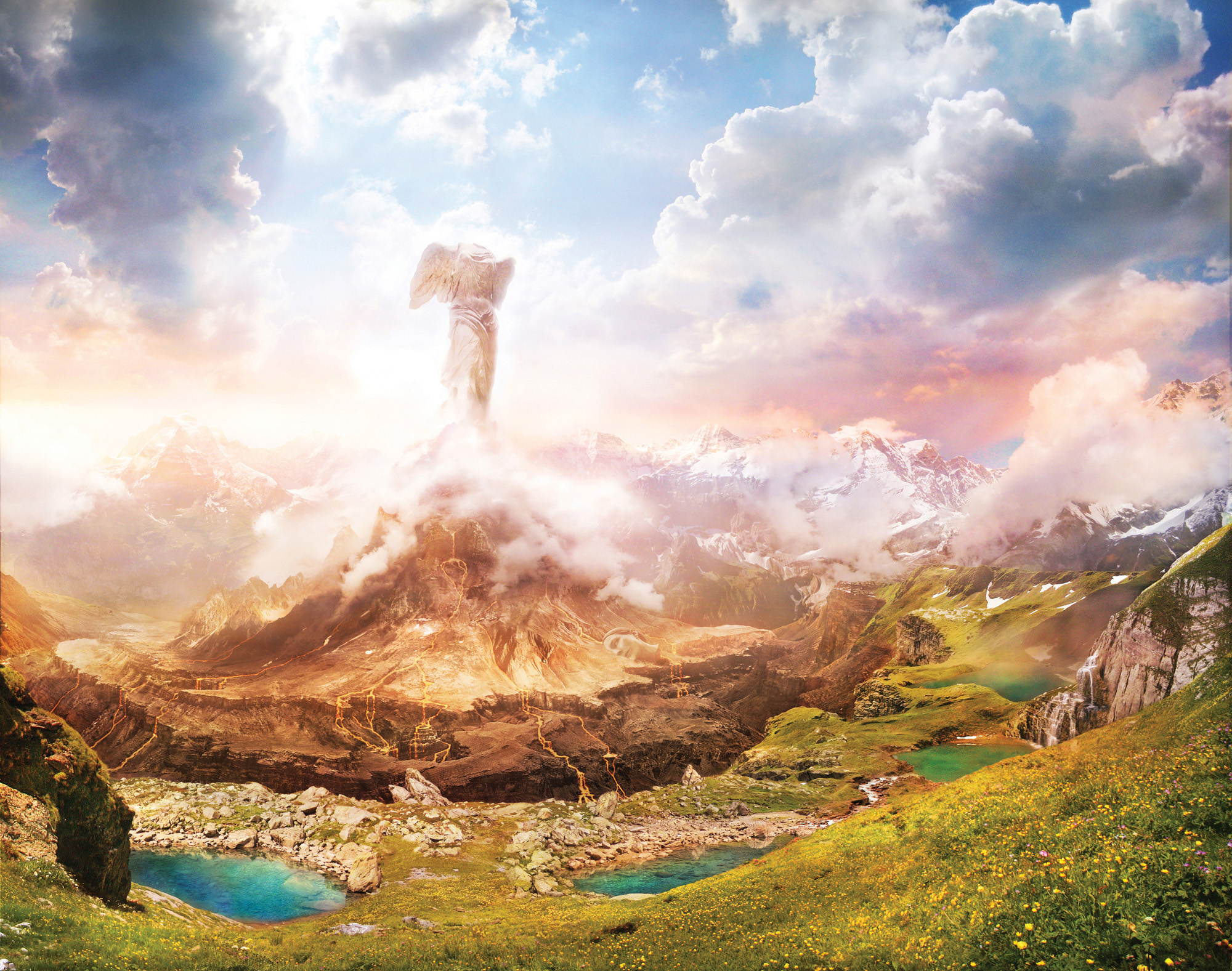
Refine Your Concept/Goals and Find Your Drive
During graduate school I also directed and edited an award winning feature length documentary on Greenwashing (Greenwashers 2011). Oh, and I also used my minor in electronic music to co-score the feature film as well. For some reason this still gets screened internationally at various festivals and educational institutions (as the concept is still fairly relevant across the world).
This epic filmmaking experience is where the concept of compositing comes back into more relevance. Each of these mediums (for myself at least) are nearly indistinguishable from a creative standpoint. For documentary filmmaking, it is about collecting, gathering, imagining, pre-visualizing, then shaping, arranging, layering, building, and whittling to the core of the concept and balance of the story and composition. It’s a different dimension of the same processes as compositing in Photoshop. Same with music composition as well—you build, piece by piece, layer by layer, getting each element in the appropriate location, at the right level of intensity and emotion—everything needs to resonate and blend seamlessly, intentionally. In this layer of my life (well, more like a smart object, really), it awakened the realization of power behind the combination of intent and craft. Results were the results (obviously?).
Enjoy your Inspiration
Moving to the Pacific NW, my wife and I soon had a son, Kellen (okay, my wife obviously did all of the real work on that part of creation some six years ago), and my world became both smaller and much much larger all at once. The only creative outlet and interest I really had was in raising my little super-dude, so this became a literal compositing theme in my Photoshop work.
We all use the tools and resources we have at hand, so I unabashedly drew my family into my creative obsessions. Out went any need for gaming, and in came a new level of digital play that was more addicting than any high score or Facebook like (though I have to say, those were nice as well). This realization paralleled my earlier theme of finding out that creating is play in itself as back when I created my own video game levels. Though in this creative play, the gore was definitely replaced with the stinky kind waiting to attack me hiding in some little guy’s diaper—and I definitely paid the price this time around.
Make The Plan, Pursue The Goal
With most of my own imagery archived deep, ready to pull out when needed, the most recent elements I had to plan, pursue, and persistently capture at just the right angle, lighting, and timing. From national and international client work, teaching at universities and colleges full-time, in addition to teaching online with Craftsy, CreativeLive, and now with KelbyOne (yay!), these pieces don’t always just fall into place on their own, but take quite a bit of shooting and reshooting to get done right.
I wrote the first edition to Adobe Master Class; Advanced Compositing in Adobe Photoshop before I turned 30, then when that one sold out everywhere, I wrote the second edition (aka tortuous-rewrite/expansion) which just came out this last December. Super proud of this one, though I’m still not sure anything is worth that much slogging at three chapters a week (one new, two edits). Okay, done complaining about my feather.
Conclusion
In general, and in case it was somehow missed, this entire story is a bit of a composite in itself, right? It more or less has just the pieces that I feel fit with the concept, creatively, professionally, and personally. Quite a lot has obviously been masked out in this story, but I think that’s the point of compositing in general. Concept to finish, usage of vignettes, paying attention to eye-flow, hierarchy, it all matters in how we move forward and finalize the idea behind it all. We all have choices as to what we bring to our subject and narrative—and how we can better blend the elements we’re perhaps stuck with and the ones we still need to go out and gather.
With proper planning, imagination, numerous fails, attempts and more attempts—and loads of creative drive and obsession, we all composite to some extent. Hopefully we like the results and have a load of fun along the way. For myself, I’m doing my best to think big and make the most of each element I have. My final concept? Have a magical adventure and make it a blast! Okay… that sounded a little bit like I want to take a trip to Disneyland, but I think (hope) you get the point.
And now, as promised, here are some actual relevant tips on shooting and compositing in Photoshop—enjoy!
Five Tips for Shooting and Editing Composite Images
- For shooting in-frame composites (ones where all the material is in the same framing), lock down your camera and settings, and use either an intervalometer—or better yet, the wifi or bluetooth wireless tethering capabilities of your camera and phone/tablet app if it has it. Not only can you see and control the live image on your phone or tablet screen, but you can easily see exactly how to better position every single element and push your concept and pre-visualization to the next level.
- Again, for in-frame compositing, select each piece you want to bring into the composite using the rectangular marquee tool (M) and give loads of room around each element you drag to select—then copy (Cmd+C/Ctrl+C) and use paste in place (Cmd+Shift+V/Ctrl+Shift+V) in your master composite file. This will paste the selected content exactly where it was copied from, leaving out the guesswork and the wasted time spent having to tediously move the element to properly match up with the background content. Mask as needed—you may not even need to use Select and Mask, and rather, just paint with a soft brush around the subject and edges of the copies (if there is nothing overlapping behind it).
- Sometimes a single layer can be slightly too light, too dark, too warm, cool, etc. than the others (even those shot during the same shoot!)—use clipped adjustments when this happens. This tip is an obvious one for some, but if you are not yet using clipped adjustments, you are definitely missing out on the amazing potential to isolate adjustments from layer to layer without globally adjusting your composite from the top down. To clip an adjustment layer to affect a single layer, place the new adjustment (or any layer with an altered blending mode that you want to only affect the one below it) directly above the one you want to clip to; next, hold down Alt/Opt while you click directly between the two layers. Just before you click, you should see the mouse pointer change to a clipped icon indicating the hotspot for this killer feature. Adjustment layers also come pre-equipped with this capability in the form of a button at the bottom of the properties panel for the adjustment layer.
- When shooting composites such as adding a subject to a completely different background (such as those shot in studio being transported to outside or a different location in general), don’t just match lighting direction and quality (this should be a given, hopefully ;-), but match both original background shot focal length (check the essential metadata in Bridge or Lightroom to see your settings) as well as frame position and distance of the subject to the camera. This will not only make your compositing SO much easier in post, but it will definitely make it look more believable as our eyes pick up on even small things that are off—even if we can’t exactly put our finger on it.
- One trick I use to better color continuity in all composite scenarios is to desaturate all the various elements, then bring in your own color cast effects or filters—then increase the vibrance as a global adjustment (not saturation). For warmer tones, try something like a new solid fill layer that is a yellow-orange. Change its blending mode to Overlay and decrease the layer’s saturation to under 15%. This always adds some nice warmth to a composite without muddying the highlights like the Photo filter often does. Another thing to play around with is the Color Lookup adjustment layer as this adjustment has some quite interesting presets that you can toggle through much like phone photography app filters. You can always use the adjustment layer’s opacity slider to bring in however much you want or don’t want for the desired effect.
And with that, I will leave you all to ponder the meaning of your own composites, whether in the grand picture of life—or more literally within Photoshop. Either way, rock on!
You can see more of Bret’s work at BretMalley.com, check out his classes on KelbyOne, and keep up with him on Facebook and LinkedIn!



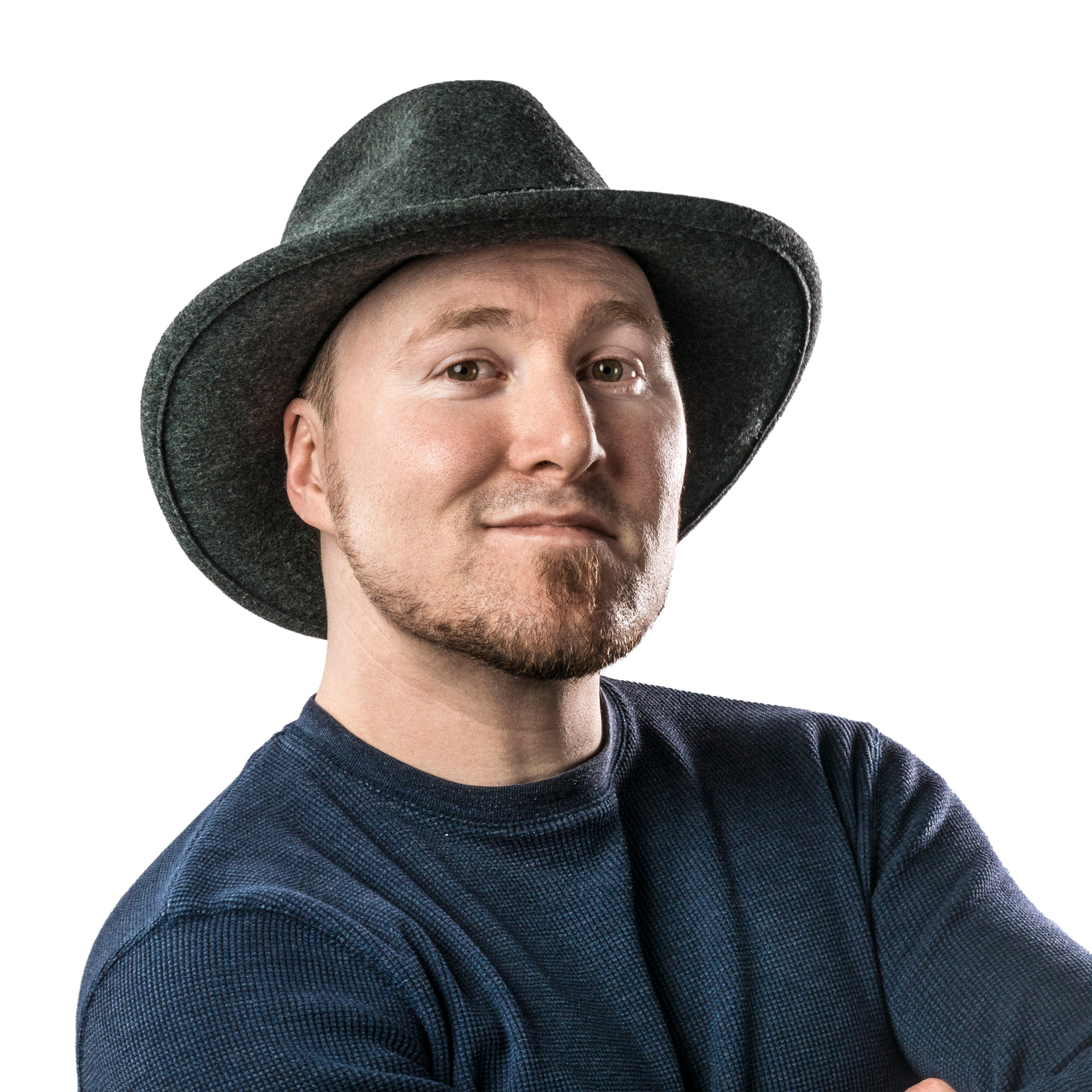

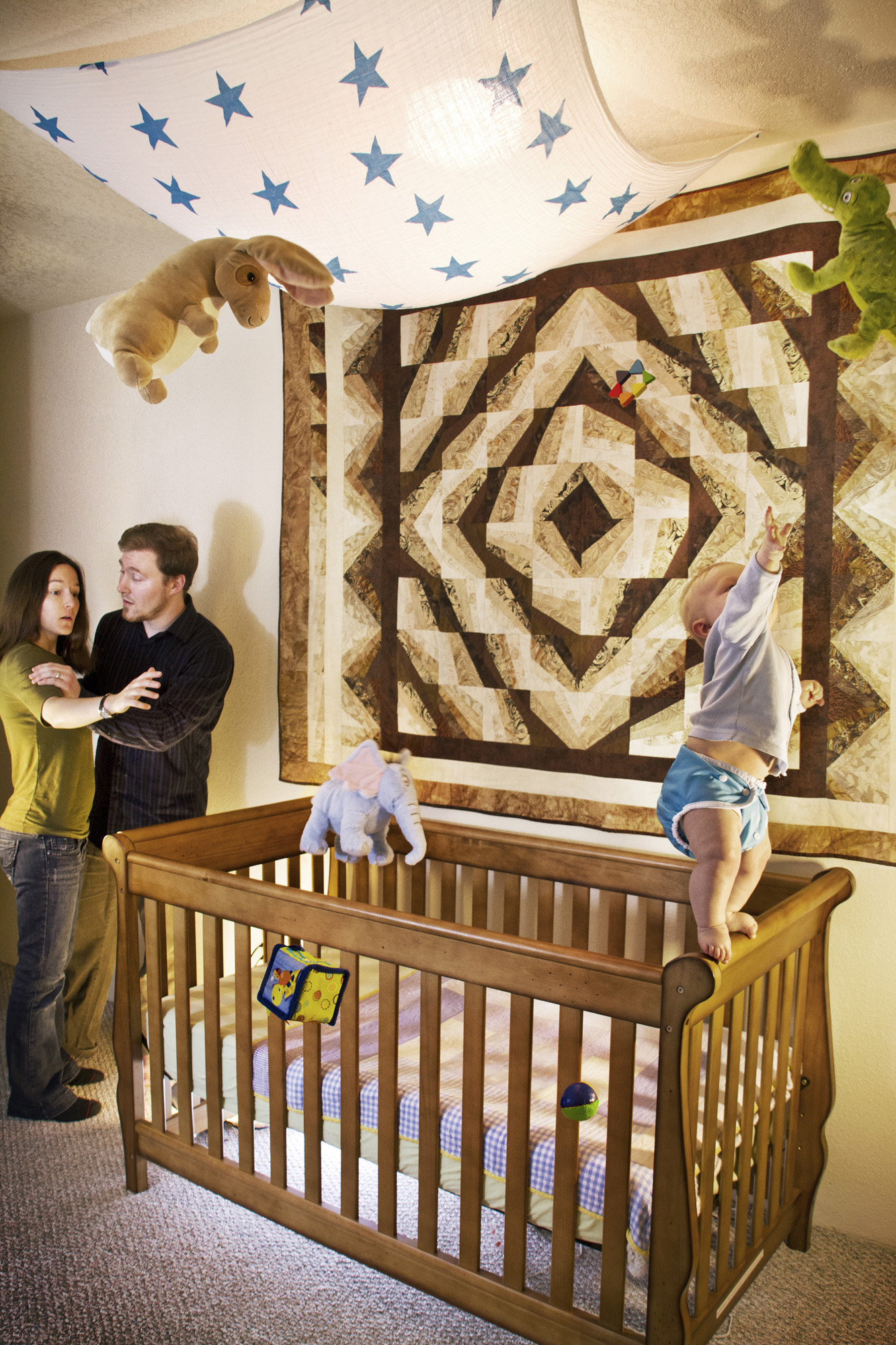
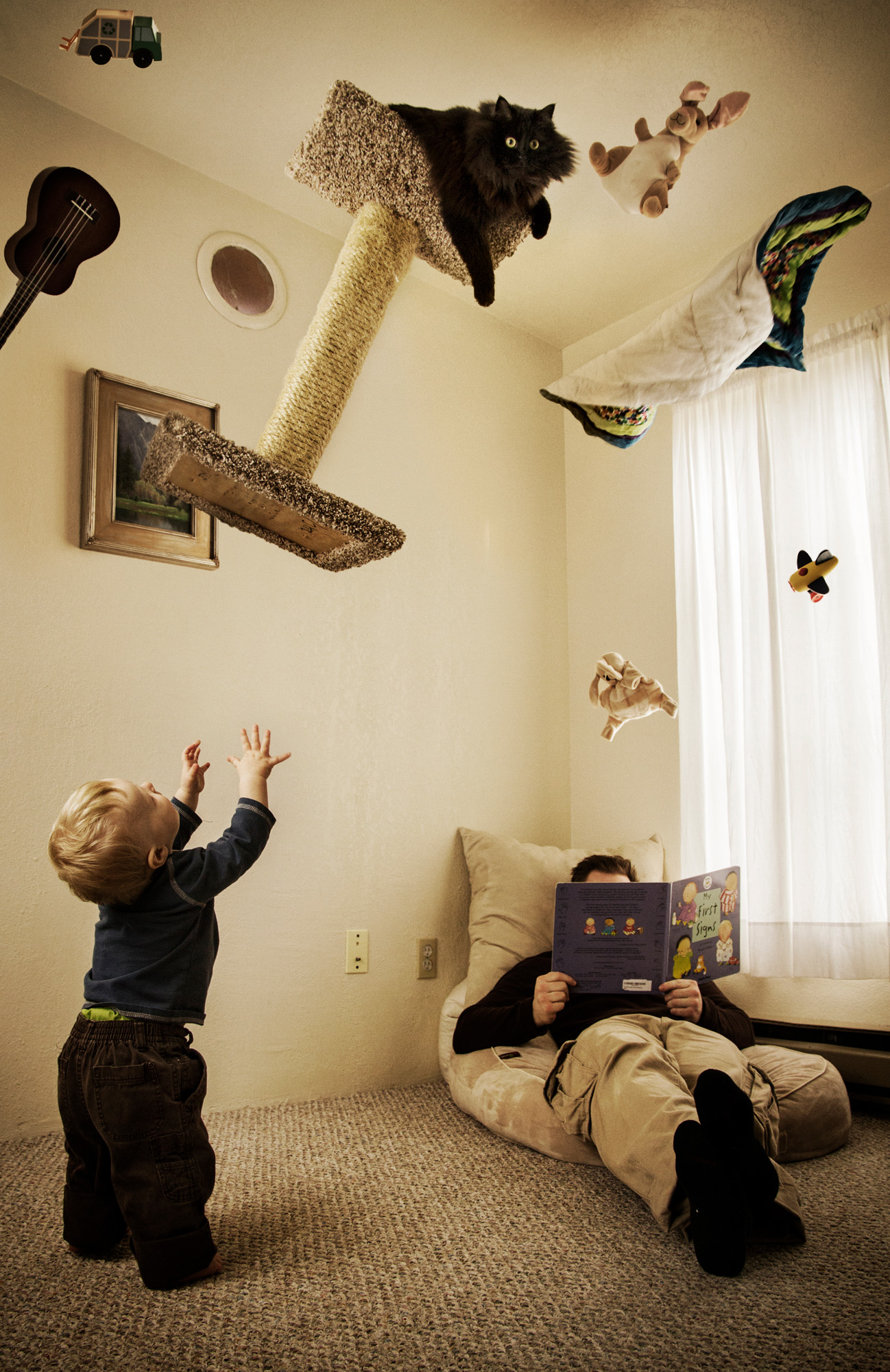



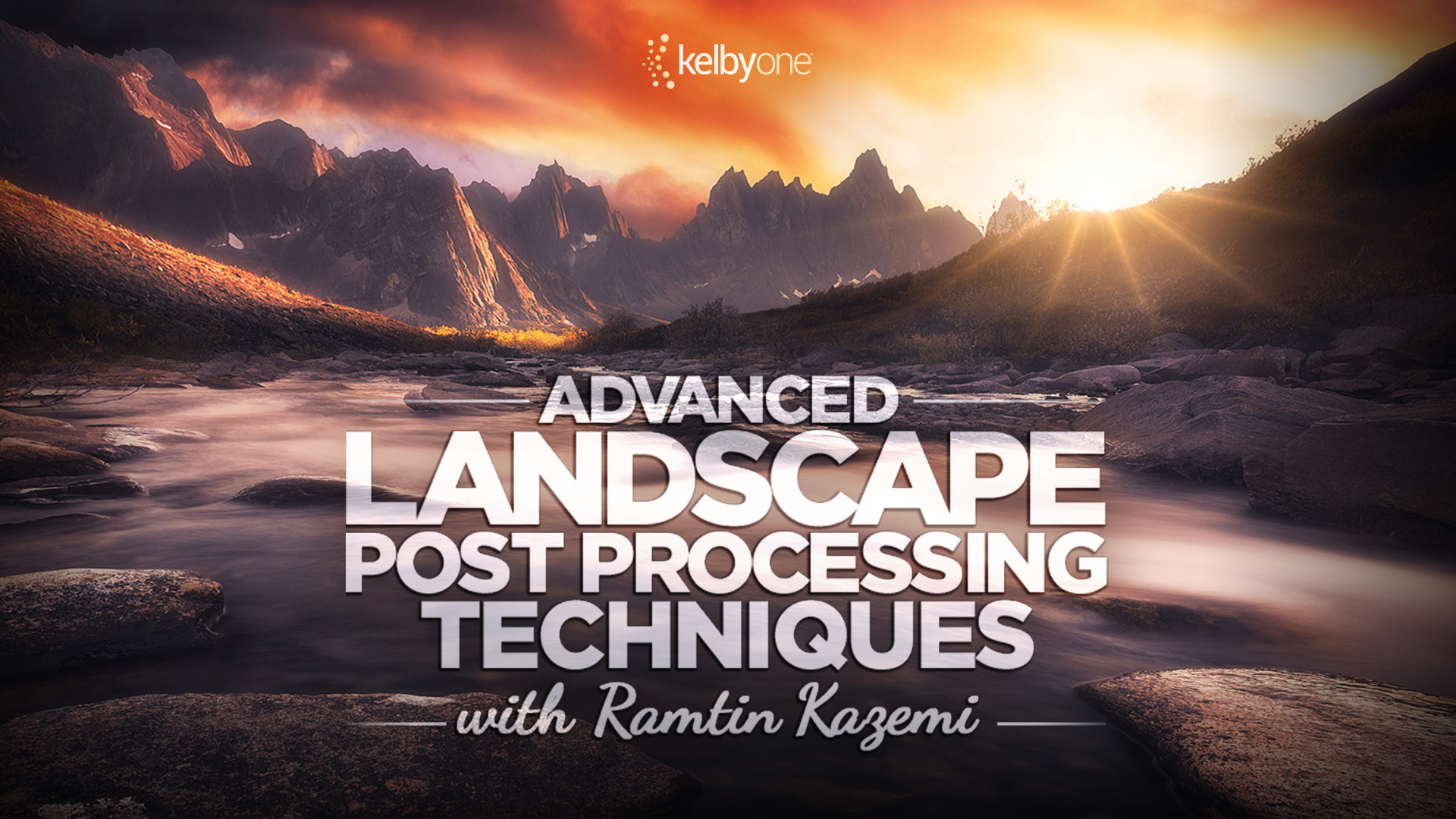

I love the composite photos of the future Harry Potter creating havoc about the house